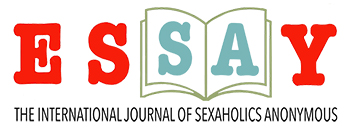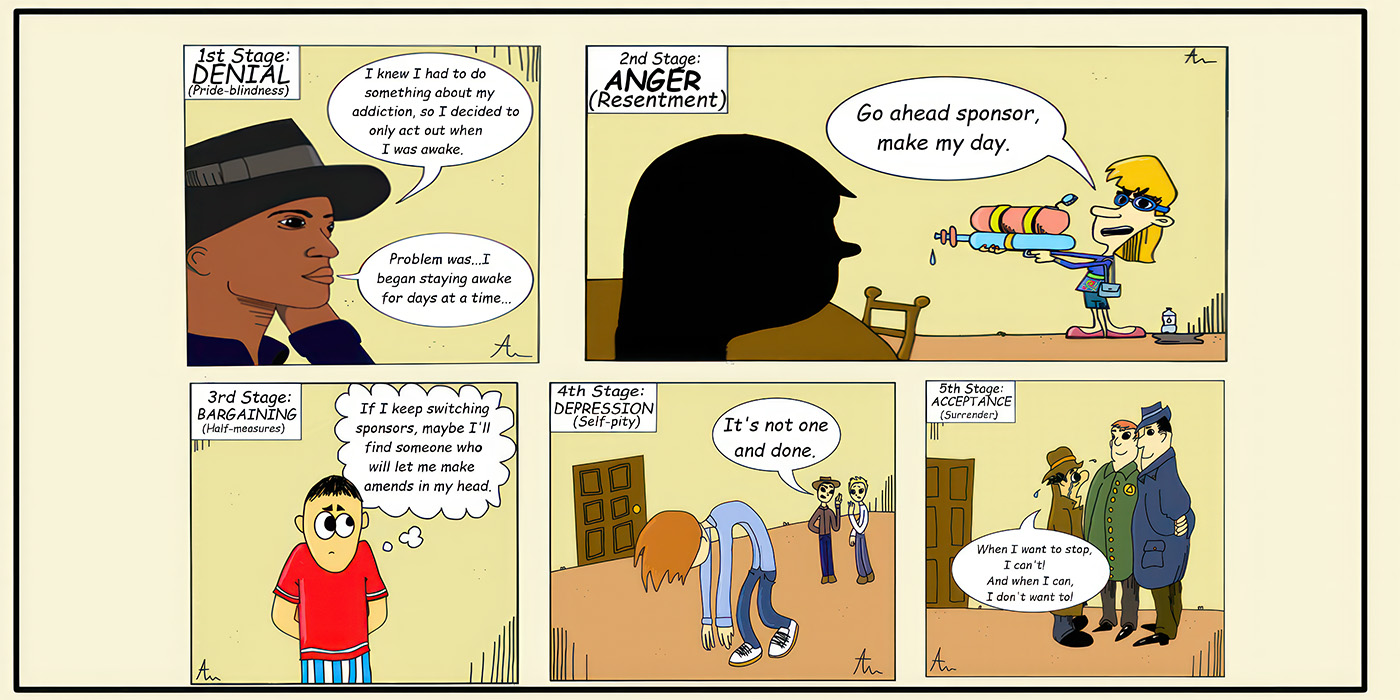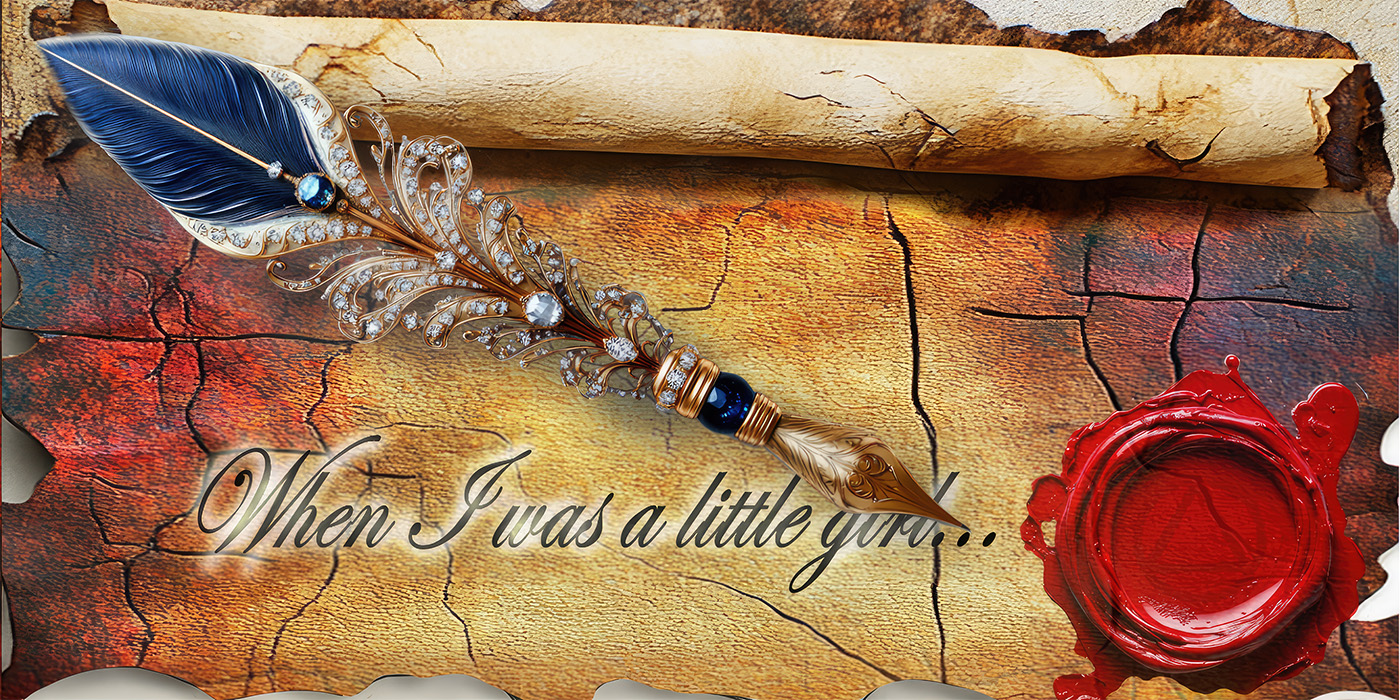Roy K. saved my life, just as his inspirations and guidance have helped save most of our lives. Roy gave me hope, something I had lost a decade prior to meeting him. Roy helped me find my soul, my conscience, my humanity, my spirituality, and my Higher Power.
Roy was our highly spiritual, soft-spoken, dignified founder. He was a deep thinking man who had many brilliant insights which were gifted to us through his writings, his talks, and his way of living soberly. He left much for all of us to ponder and discover. For me, his greatest gift was his insight into how addiction works; and specifically how sexaholism works. He was also insightful in giving us suggestions and guidance in living soberly.
He showed us the simple and profound insight that lust was our addiction. It was lust I was addicted to, not sexual acting out. The minute I heard that, all kinds of things came together and started making sense. I had always been so helpless and hopeless in stopping my acting out. That was because I was trying to stop the symptoms, not the problem. One of the first things I learned in business school was to “search for the cause, not the effect.” Looking at the effects can help in finding the causes, but dealing with the effects won’t solve the causes.
Roy showed me that our lusting was the cause, and our acting out was only a symptom. For me, the chain reaction was that my spiritual maladies triggered my lusting; the lusting triggered my acting out; the acting out caused my feelings of guilt, shame and desperation; those feelings caused me to hate myself; which caused me to do self-destructive, self-sabotaging things. This started the cycle all over again, and I spiraled deeper and deeper into the abyss.
Roy also taught me that breaking this repeating cycle anywhere along the chain reaction helps in stopping the next effect. But the closer to the beginning of the cycle we can break it, the less we will need to deal with the impending causes and effects. I think that working the 12 Steps, gradually gets us closer and closer to the beginning of the cycle.
Being a brilliant, deep thinking, and inspirational person does not mean a person doesn’t make mistakes. Being gifted with insight doesn’t mean that a person will always comprehend his mistakes. This applied to Roy, just as much as any other person. In my opinion, Roy was a great man, but he was not a saint. Not everything he thought was always correct, and not everything he did was done cleanly.
This is not the place to discuss those foibles, but I will say that Roy and I butted heads more than once. I would guess that 50% of the times we butted heads, he was correct; 25% of the time I was right; and 25% of the time neither of us were correct. I am very grateful that Roy made his amends with me, and I made mine with him, before he died.
Here is how I first encountered Roy. It was in 1985 that I saw the light that my acting out was a result of an addiction. At the time I had never heard of sexual addiction or of SA. I didn’t even know what I was addicted to. I looked for Pornography Anonymous, Prostitutes Anonymous; etc. This was before the internet, so the telephone and the library were my means of research. During that time, I joined AA in Los Angeles — not because I thought I was an alcoholic (which indeed I was) but because I thought I could learn about addiction and recovery there. I truly did want to quit drinking and doing drugs, because they often reduced my inhibitions; plus they fueled or enhanced my acting out experiences.
Periodically, I would call the Los Angeles AA Intergroup Office to ask if they knew of any programs for someone with my problems. For the first several months, the answer was always: “No.” Finally, in March 1986, I reached a man at the office who said something like: “Well, I don’t know of any programs for what you described. However, there is this guy named Roy who often talks about problems like yours. He said it was fine to give his number out to anyone who asked.”
About a week later, at 11:30 p.m. after my wife had gone to sleep, I called that number. I got a very sleepy Roy K on the phone. Within 10 minutes I was sobbing and sobbing, spilling more and more of my guts out. We talked for about an hour. I finally had found someone who understood. I didn’t think there was anyone else but me who acted out like I did. He told me about a meeting of SA that weekend. I had hope.
For the next hour, I was still sobbing, and I couldn’t go to sleep. So, about 1:30 in the morning I called him again, and again got a very sleepy Roy K. I didn’t know at the time that Roy routinely went to bed about 10 at night. We talked for a while longer. That’s how I found Roy, and how I found SA, hope and recovery.
At that time, there were only four SA meetings a week in the Southern California area. Roy and I lived in the same part of Los Angeles, so we saw each other regularly at meetings. I got a lot of experience, strength and hope from those meetings; especially when Roy was there.
At that time the White Book hadn’t been published yet. It had been written and revised, but it still needed more revisions before being published. In the meantime, Roy had printed out 15 or 20 articles he had written about sexaholism. We would staple them together and give them out at meetings. I would go to Roy’s house (actually his garage) and help him staple them together. I also helped him revise the White Book for its initial printing. I did not do any of the writing, just helped organize things and such.
Roy and I talked a lot in his garage. What a blessing it was for me to be able to get his experience, strength and hope on a one-to-one basis. We also helped form several more meetings in the Los Angeles area.
In 1989, the White Book was finally printed. That first edition was not much different from what we use today. About six months later, Roy asked if I could give him some help with SA’s finances and accounting. That’s what I did for a living, so I said sure.
The main problem was that we did not have an effective way of gathering essential financial information or for collating and assessing it. I set up an easy to use accounting and information system. When we looked at the information gathered by this system, I clearly saw that SA was losing money, and Roy was using his own funds to keep SA afloat.
We had a bit of a discussion about Tradition 7 and being self-supporting. I told Roy I would see what I could come up with to remedy this problem. One thing I discovered was that SA was losing money on each White Book it sold. Because the printing runs were not very big, the cost of printing was high. I think the cost was about $3.50 each and they were sold for $3.00. I told Roy we needed to double the price of the White Book. Roy was worried some people would not be able to afford that cost. I countered that, if we didn’t do that, there would be no SA, so no books would be available. We agreed on the $6.00 price, and that if someone could not afford it, the group would let that person pay what they could afford.
That solved some of the financial problems, but SA was still losing money. I suggested that every two weeks, each group could pass around a second basket, with that money going straight to SA Central Office, along with what the groups could afford from their regular 7th Tradition. So folks, if you begrudgingly donate to that second basket now and then, you can blame me.
When I think about Roy, the word that usually comes up for me is “dignity.” Two definitions of the word “dignity” are: “The quality of being worthy of honor or respect,” and, “A composed or serious manner or style”. This is exactly who Roy was. This is how he lived his sober life. He was a magnet for sobriety. His dignity attracted sobriety. Roy “walked the talk”, and he “talked the walk.”
When I was quite new in AA, there was a fellow in many of the meetings who was dying of AIDS. This was before there was any hope of life for someone with AIDS. I watched as his condition worsened and worsened. Being a newbie, I naively asked him why he wanted sobriety. I said that if I were in his circumstances I would be going on binges every night. He answered: “I want to die with dignity.” That response left an indelible stamp on my psyche.
I was no longer living in California while Roy was dying. I heard from others that Roy died with dignity, and he died with sobriety. He died the way he lived. His sober dignity lives on for me as a beacon, a compass to stay on the path of sobriety. Roy was a bigger than life person, who helped give us something much bigger than life.
Terry M., North Carolina, USA
Discussion Topic
Is my recovery a dignified and humble beacon to others?
The author of this article knew Roy personally. He describes how he learned a lot from directly associating with him and helping him with service.
He was able to notice first-hand how Roy was our inspirational and very gifted founder while at the same time a flawed human being, like all of us.
Am I associating with longer sober members, while being open to learn from them? Or am I hanging out only with those who are not really “walking the walk”?
Am I at the same time keeping vigilant in not putting them on a pedestal?
Am I looking for opportunities to help those who have been around longer with their SA service? Or do I take their efforts for granted and only take from the fellowship without returning anything to it?
Is my recovery a humble beacon to others?
You may use this topic in a discussion meeting, or send a story of your own recovery journey to essay@sa.org






